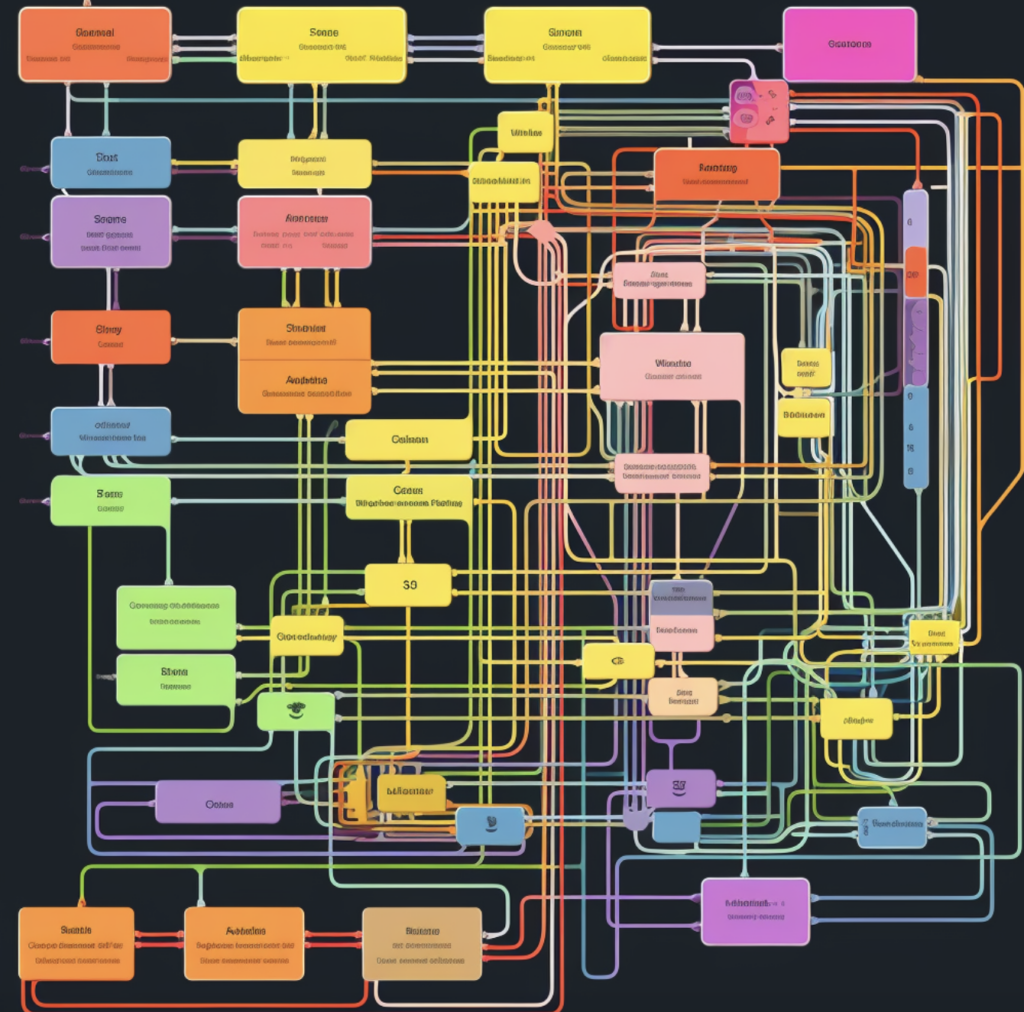Diving into the world of server architecture, you’ll encounter some ‘deep water’ concepts like static residential proxies and reverse proxies. Don’t fret! You’re about to unravel these tech terms, discovering how they’re integral cogs in the machinery of data security.
Navigating the ‘ocean’ of server architecture, it’s vital to understand the role of static residential proxies in data protection. These technological marvels not only ensure anonymity and security but are also extensively used in industries like finance for data aggregation. While they help in combating CAPTCHAs, the primary focus of these proxies is on data security. As you dive deeper, you’ll understand the growing necessity of these mechanisms in ensuring seamless and secure data transfers.
By the end, you’ll not only understand what they are, but also how they function, and why they’re so important.
→ See our:
→ Visit our blog and discover our different articles:
–Learn How A Proxy Server Improves Security
–Static residential proxies: Your key to anonymity and security!
–All you need to know about Telegram proxies
–Proxifier: The Ultimate Tool For Managing Proxies And Connections
⇒ And more!
Key Takeaways

- Server architecture is the fundamental structure of a system, organizing its elements and their interactions.
- Static residential proxies combine residential and datacenter proxies to provide a stable, high-speed connection that is less likely to be blocked by websites.
- Static residential proxies have real IP addresses, making them highly reliable and useful for maintaining a consistent online presence and tasks like data scraping.
- Static residential proxies enhance the digital experience by offering stability, security, and the ability to access geo-restricted content.
Understanding Server Architecture: The Basics
Before we dive deeper, you’ve got to grasp the basics of server architecture. It’s the fundamental structure of a system, a way to organize its elements and how they interact. Picture it as the blueprint of a building, mapping out the layout of each room, where the wiring goes, and how the plumbing functions.
Just like that, server architecture outlines the design of the server, its components, and how they work together. You’ve got hardware, like processors and drives, and software, like operating systems and applications. They’re all interconnected, and the way they’re organized impacts the performance, capacity, and reliability of the server.
Understanding this structure is key to navigating more complex areas, like static residential proxies and reverse proxies.
Static Residential Proxy: A Deep Dive
Now, let’s switch gears and focus on the concept of static residential proxies.
You’ll get to know the basics, understand its usage and benefits, and explore the security implications.
It’s an exciting journey that’s sure to enhance your knowledge of server architecture.
Static Residential Proxy Basics
Let’s dive into the world of static residential proxies and explore what makes them such an essential part of modern server architecture.
Essentially, a static residential proxy is a combination of both residential and datacenter proxies. They provide you with a stable, high-speed connection and are less likely to be blocked by websites. These proxies are assigned real IP addresses, making them highly reliable.
They’re perfect if you need to maintain a consistent online presence, as they don’t change every time you connect to the internet. You’ll find them particularly useful for tasks like data scraping, where stability and reliability are key.
Usage and Benefits
You’re about to discover the various uses and benefits of static residential proxies, a tool that’s indispensable in today’s digital landscape.
- Data Scraping: They aid in gathering vast data from websites without being blocked, thus making your research more efficient and less time-consuming.
- Online Privacy: They’re great for maintaining online privacy. By masking your IP, they keep your identity safe and secure from potential cyber threats.
- Access Geo-restricted Content: They help bypass geo-restrictions. This means you can access content unavailable in your region, offering you a borderless internet.
In essence, static residential proxies aren’t just a fancy tech term; they’re a gateway to a seamless and secure digital experience.
Security Implications
Before we dive into the technical details, you must understand the security implications that come with using static residential proxies, and how they can significantly impact your online safety.
Static residential proxies can help mask your online identity, but they’re not foolproof. They can be breached by hackers who could then gain access to your private data.
If you’re using a static residential proxy, make sure to use a reputable provider. Always keep your software up-to-date and use strong, unique passwords.
Also, be cautious of any suspicious activities or communication as this could be a sign of a security breach.
Don’t let the convenience of these proxies lull you into complacency – your online security should always be a priority.
Discover How Our Proxies Are Being Utilized by Clients;
-And more!
→ (https://proxyempire.io/proxy-use-case/)
How Static Residential Proxies Function in Server Architecture
Let’s move on to understanding how static residential proxies function within server architecture.
You’ll see the crucial role they play and how their functioning mechanisms work in this context.
It’s a complex topic, but we’ll break it down so it’s easy to grasp.
Static Residential Proxies’ Role
In server architecture, static residential proxies play a crucial role by providing a stable, yet flexible intermediary for internet connections.
- Stability: Unlike other proxies, static residential proxies don’t change their IP addresses, ensuring consistent connection and superior network stability.
- Anonymity: They help maintain your anonymity by masking your real IP address with a residential one, making it almost impossible for servers to detect your proxy usage.
- Access Unlimited Resources: You can bypass geo-restrictions and access unlimited resources with these proxies, which are less likely to be blacklisted.
Functioning Mechanism Explained
You often interact with a static residential proxy when you’re online, but mightn’t understand how it functions within server architecture. It’s pretty straightforward.
A static residential proxy acts like a mask, hiding your IP address while providing you with a different one, usually from a residential network. This allows you to browse the web without revealing your actual location or identity. The server you’re accessing sees the proxy’s IP, not yours. So you’re essentially browsing from the proxy’s location.
Static proxies are even more special because they’re assigned real, physical locations. They’re not rotated or changed like dynamic proxies, so they seem even more legitimate to servers. This stability makes them ideal for tasks requiring high anonymity and reliability.
The Role of Static Residential Proxies in Data Security
How often have you considered the role of static residential proxies in enhancing your data security? These proxies play a crucial part in securing your digital data in three significant ways:
- They provide an added layer of anonymity online, reducing your exposure to harmful threats.
- By providing a consistent IP address, they lower the risk of triggering security systems and getting you blocked.
- They facilitate encrypted connections, reducing the possibility of data interception.
In essence, static residential proxies are your digital bodyguards, protecting your sensitive information from cyber threats.
Unraveling the Concept of Reverse Proxies
Let’s dive deeper into the world of server architecture by unraveling the complex concept of reverse proxies.
Essentially, a reverse proxy is a server that sits between client devices and a web server, forwarding client requests to the web server. This process boosts security and performance.
Imagine it as a middleman, ensuring your web server doesn’t get overwhelmed with traffic. Reverse proxies handle load balancing, preventing any server from getting too much traffic.
They also offer enhanced security by hiding the identity of your backend servers. In essence, reverse proxies are the unsung heroes in the server architecture world, silently managing traffic and security.
Understanding them will help you navigate complex server architectures with ease.
The Functionality of Reverse Proxies in Server Architecture
In understanding server architecture, it’s vital to grasp what a reverse proxy does and how it dramatically improves a server’s functionality. Imagine it as a mediator, a middleman between clients and your server, making requests on behalf of clients.
Here are three key functions:
- Load Balancing: It distributes network or application traffic across many servers. This prevents any one server from getting overwhelmed, improving efficiency and responsiveness.
- Security and Anonymity: Acting as an intermediary, it hides your server’s identity, providing an extra layer of security against malicious attacks.
- Caching: It can store copies of content from your server, serving these to clients, reducing the load on your server, and speeding up response times.
Comparing and Contrasting Static Residential Proxies and Reverse Proxies
While you’ve got a solid grasp on reverse proxies, it’s time to delve into static residential proxies and how they stack up against reverse proxies.
A static residential proxy, being tied to a specific IP address, offers a high level of anonymity and stability. It’s perfect if you’re looking to scrape data or bypass geo-restrictions.
On the flip side, reverse proxies serve as intermediaries for servers, directing client requests and balancing server loads. They’re ideal for improving security and speeding up server response times. However, they don’t offer the same level of anonymity.
Static Residential Proxies – ProxyEmpire
ProxyEmpire provides a powerful network of exclusive static residential proxies, perfect for scenarios where you need to maintain the same IP address throughout multiple browsing sessions.
With Static Residential IP Proxies, you can enjoy the stability of using the same unique IP address for a month or even longer, ensuring exclusivity for your online activities.
Our extensive coverage spans 17 countries and 21 different internet service providers (ISPs), offering you unparalleled access and flexibility.
⇒ https://proxyempire.io/static-residential-proxies/
Conclusion
In conclusion, you’ve successfully traversed the complex terrain of server architecture, gaining deep insights into the workings of static residential proxies and reverse proxies. No longer are you a novice in the technical world, you’ve emerged as a master, capable of boosting data security and enhancing server performance effortlessly.
When it comes to powerful and exclusive static residential proxies, ProxyEmpire offers an extensive network that assures stability and exclusivity for your online activities. Our extensive coverage across 17 countries and 21 different ISPs guarantees unparalleled access and flexibility. Your journey in the tech world has just begun, and ProxyEmpire stands ready to aid you as you continue to make strides forward.




















